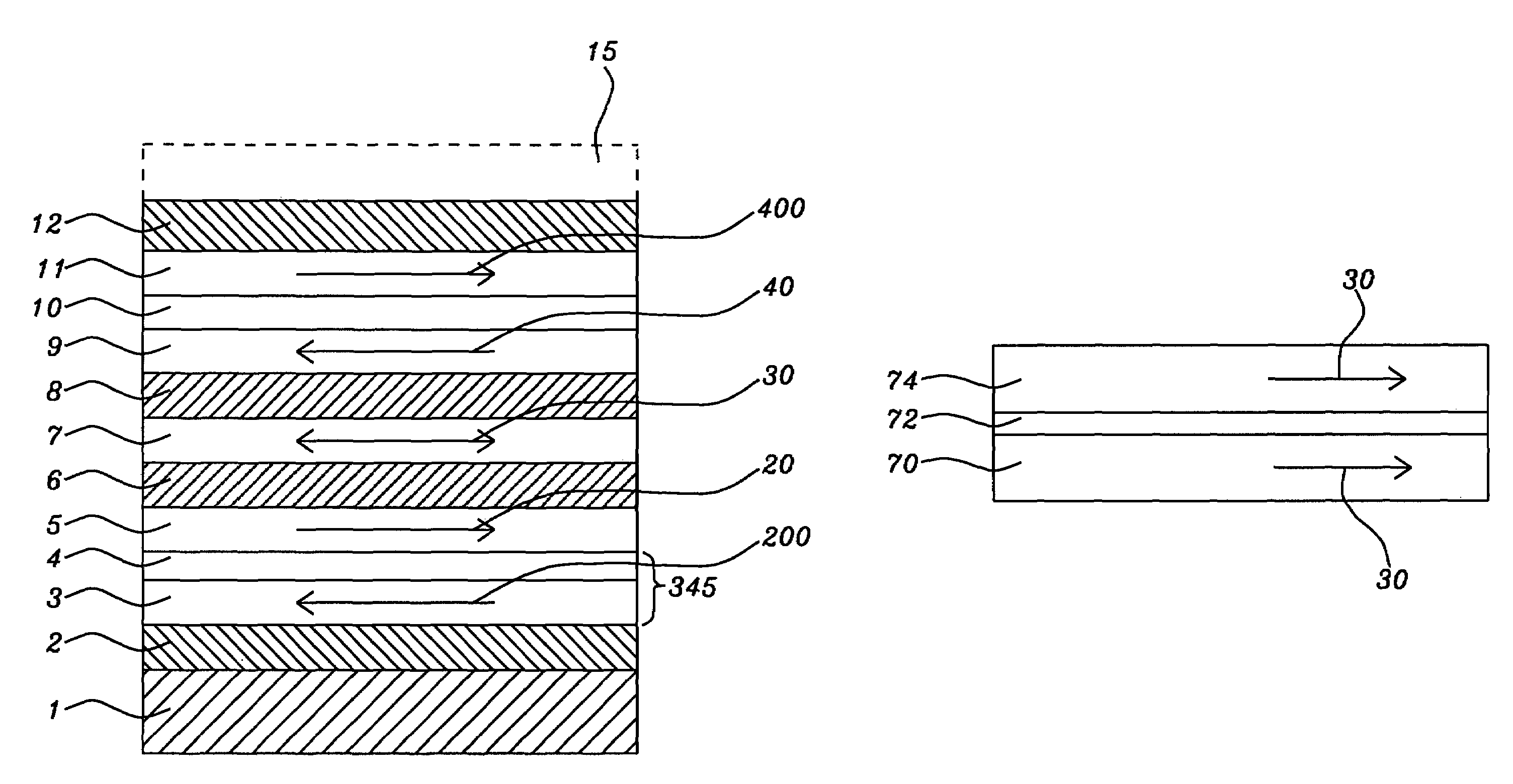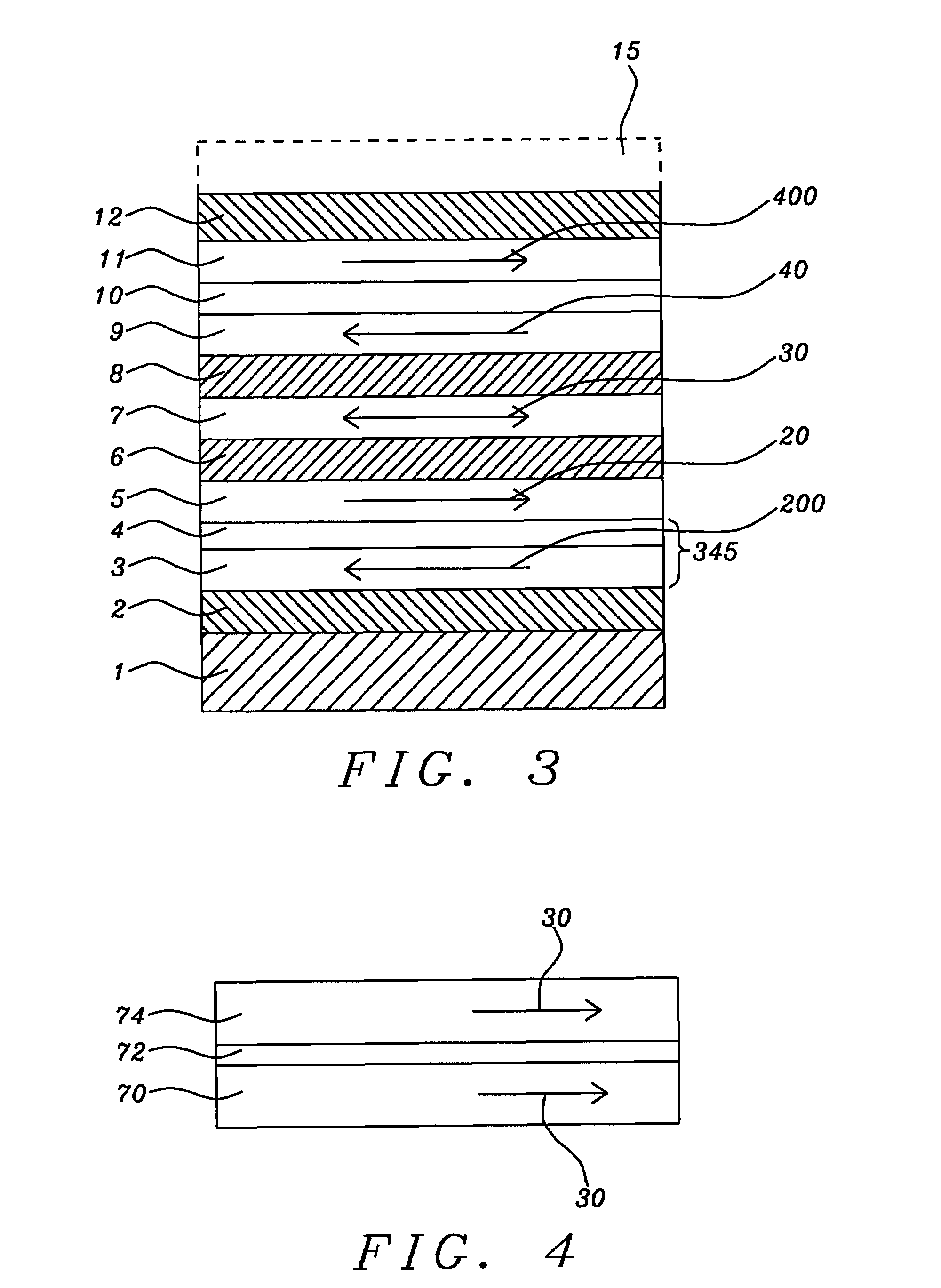Spin transfer MRAM device with novel magnetic free layer
a magnetic transfer and layer technology, applied in semiconductor devices, digital storage, instruments, etc., can solve the problems of increasing power consumption, and affecting the stability of the magnetic field externally generated, so as to achieve significant enhancement of the ratio dr/r
- Summary
- Abstract
- Description
- Claims
- Application Information
AI Technical Summary
Benefits of technology
Problems solved by technology
Method used
Image
Examples
Embodiment Construction
[0024]The preferred embodiment of the present invention is an MRAM device of the spin-transfer variety, having a CPP-MTJ configuration and including a free layer formed as an exchange coupled lamination of two CoFeB magnetic layers separated by a thin layer of Ta or Hf.
[0025]Referring to FIG. 3, there will now be described a schematic cross-sectional view of a preferred embodiment of the present invention. Looking at the structure from the bottom upward, the embodiment comprises the following sequence of layers. Layer (1) is a substrate or underlayer. Layer (2), formed on the substrate, is a magnetic pinning layer formed of an antiferromagnetic material such as MnPt, IrMn, FeMn or NiO. Layers (3), (4) and (5) together form a exchange coupled structure, collectively denoted (345), in which layer (3) is pinned to anti-ferromagnetic layer (2) by an exchange coupling mechanism and layer (5) is pinned to layer (3) by an exchange coupling mechanism in which non-magnetic spacer layer (4), ...
PUM
 Login to View More
Login to View More Abstract
Description
Claims
Application Information
 Login to View More
Login to View More - R&D
- Intellectual Property
- Life Sciences
- Materials
- Tech Scout
- Unparalleled Data Quality
- Higher Quality Content
- 60% Fewer Hallucinations
Browse by: Latest US Patents, China's latest patents, Technical Efficacy Thesaurus, Application Domain, Technology Topic, Popular Technical Reports.
© 2025 PatSnap. All rights reserved.Legal|Privacy policy|Modern Slavery Act Transparency Statement|Sitemap|About US| Contact US: help@patsnap.com



